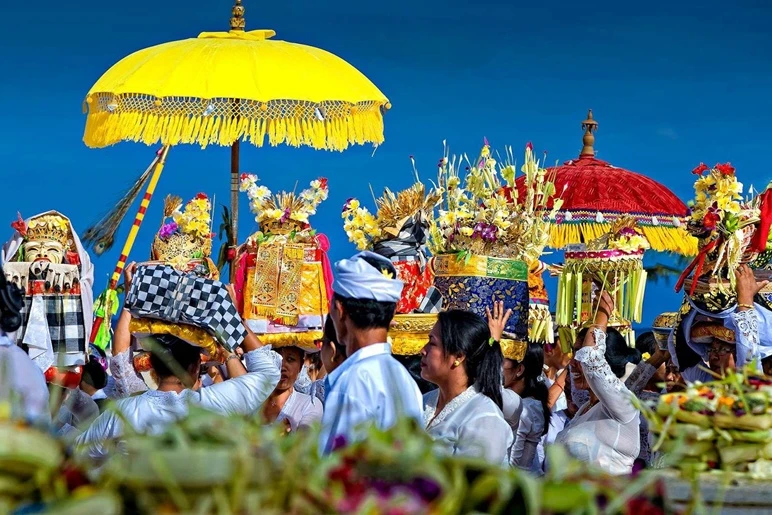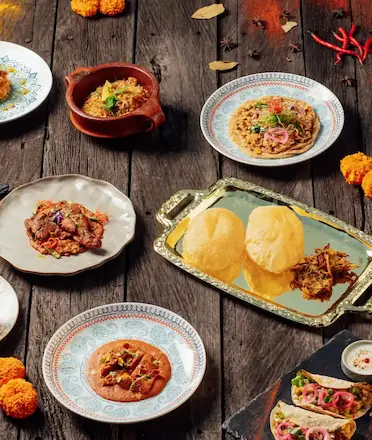Today marks the Galungan celebration in Bali. It is one of the most sacred moments, a time when the island feels charged with spiritual energy and cultural pride. Penjor rise above village streets, families gather in their ancestral compounds, and age-old rituals remind everyone of the island’s deep spiritual roots. If you want to understand Bali beyond beaches and resorts, Galungan is the perfect lens. Here are some of the most fascinating facts about this sacred and vibrant Balinese tradition!
Here are some of the most fascinating facts about this sacred and vibrant Balinese tradition!

Ancient Origins Dating Back to 882 CE
The first recorded Galungan celebration took place in 882 CE, as written in the lontar Purana Bali Dwipa. This makes Galungan one of the oldest continually observed rituals in Bali, giving the festival a historical gravitas that still resonates today.
A Spiritual Battle Between Dharma and Adharma
Galungan symbolises the triumph of Dharma, which represents virtue and clarity, over Adharma, which represents turmoil and moral decline. This cosmic theme is at the heart of Balinese Hinduism and becomes especially visible through the storytelling, rituals, and prayers performed during the festival.

Celebrated Twice Each Year
Bali follows the Pawukon calendar, a 210 day system that gives every festival its own rhythm. Since Galungan falls on Wednesday Kliwon Dungulan, it appears twice in the Western calendar year. The island experiences this spiritual high point regularly, each time with the same sense of anticipation and communal reverence.
Dramatic Myth of Lord Indra and Mayadenawa
Galungan draws from the legendary battle between Lord Indra and Mayadenawa, a powerful figure known for his deceit and refusal to honour the gods. After a series of transformations and attempts to escape, Mayadenawa was defeated. The holy spring at Tirta Empul is believed to have emerged during this divine conflict, cementing its importance in Balinese culture.
Elaborate Preparation Rituals Begin Weeks Earlier
Galungan is not confined to a single day. Rituals begin nearly a month in advance with events such as Tumpek Wariga, Sugihan Jawa, Penyekeban, Penyajan, and Penampahan. Each step prepares the home, the family, and the spirit for the main celebration, creating a spiritual buildup that feels almost seasonal in its progression.

Historical Pause Linked to Calamity
One of the most striking parts of Galungan’s history is its temporary disappearance. During the rule of King Sri Ekajaya, the celebration was halted for 23 years. Ancient records describe a period filled with calamities that unsettled the island. When King Sri Jayakasunu restored Galungan and performed deep spiritual practices, the misfortunes reportedly subsided. This episode remains a powerful reminder of Bali’s belief in maintaining cosmic balance.
Home Temples Turn Into Ancestral Gateways
During Galungan, Balinese families believe that their ancestors return to visit. Home temples become sacred portals where offerings, prayers, and incense are dedicated to welcome these returning spirits. Daily life shifts toward the spiritual as families gather, cook, prepare offerings, and reconnect with their lineage.

Penjor Represent Gratitude and Prosperity
The tall, curving penjor that decorate Bali’s streets are among the most recognizable symbols of Galungan. Made from bamboo and adorned with young coconut leaves, grains, fruits, and roots, they symbolise the sacred mountain as the source of life and prosperity. Their presence transforms the island into a living gallery of devotion.
Ritual Meaning Rooted in Self Mastery
Beyond mythology and ceremony, Galungan carries a powerful personal message. The bhuta or kala mentioned in ancient texts represent human desires. The festival reminds individuals to rise above impulses such as the thirst for power, envy, and uncontrolled ambition. At the heart of Galungan lies the idea of spiritual discipline and the victory of inner clarity.




 Billy Bagus
Billy Bagus
 Dec 11, 2025
Dec 11, 2025






